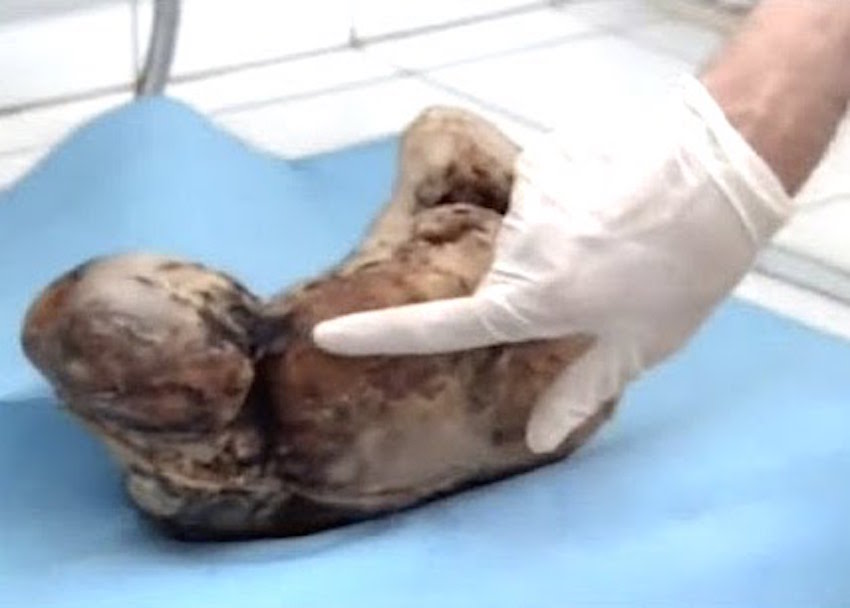In 1955, Zahra Aboutalib went into labor in her small Colombian village. 48 hours later, the baby was still unborn — but after watching a pregnant woman die a horrible death on the operating table, Zahra ran from the hospital in a terrified state.
Zahra felt severe pain in her abdomen, but because of local folklore, she believed the baby would be born at a later date.
The pain suddenly stopped, but Zahra never went into labor again.
Over the next several decades, Zahra put the unborn baby out of her mind. She adopted three children and became a grandmother. But by the time she was 75, the horrible pains returned.
No doctor could diagnose Zahra's mysterious illness. One doctor, who feared she had an ovarian tumor, sent her in for an ultrasound. Zahra had a large white mass, but still, the doctors were completely stumped. She visited a specialist radiographer for another opinion.
But this was no tumor. In fact, the doctors had never seen anything like it…

In 1955, in a small Colombian village, a woman named Zahra Aboutalib went into labor. But two days passed, and Zahra still hadn't delivered her baby.
She had a bad feeling about her pregnancy. She had once watched a woman die in agony on the operating table. In an effort to avoid the same tragic fate, Zahra fled the hospital.
Zahra felt incredible pain for days, but it suddenly stopped. She believed in the myth of the "sleeping baby," in which a fetus which has been rendered dormant by black or white magic may wake up and be born after the normal pregnancy term.
Assuming she would eventually give birth to her unborn baby, Zahra stopped thinking about it.

Many decades passed, and yet Zahra never gave birth. Over time, she adopted three children and became a grandmother.
By the time she was 75 years old, the severe pain returned.
Dr. Taibi Quazzani felt her swollen stomach and feared it was an ovarian tumor. He ordered an ultrasound and found a large, white, mysterious mass. Dr. Quazzani couldn't even take a guess as to what it was. He sent her to a specialist radiographer for a second opinion.
The doctors were shocked by what they discovered next.

This was no tumor, but a rare medical phenomenon.
The mass inside Zahra's stomach was a lithopedion, also known as a "stone baby."

Unable to be born, the baby — which developed outside the womb and fused with Zahra's internal organs — had died many years prior.

To protect itself from infection, her body developed a layer of calcified material around the dead baby. It hardened over the years, hence the term "stone" baby.
In turn, the stone baby remained undetected in Zahra's abdomen for decades.

There are around 300 reported cases of this syndrome, but Zahra's calcified baby spent the longest time in the womb.

Zahra underwent surgery to remove the calcified fetus. It was an extremely delicate procedure, since it had fused with her abdominal wall and internal organs.
In essence, Zahra "gave birth" to the stone baby 46 years after it was conceived.




